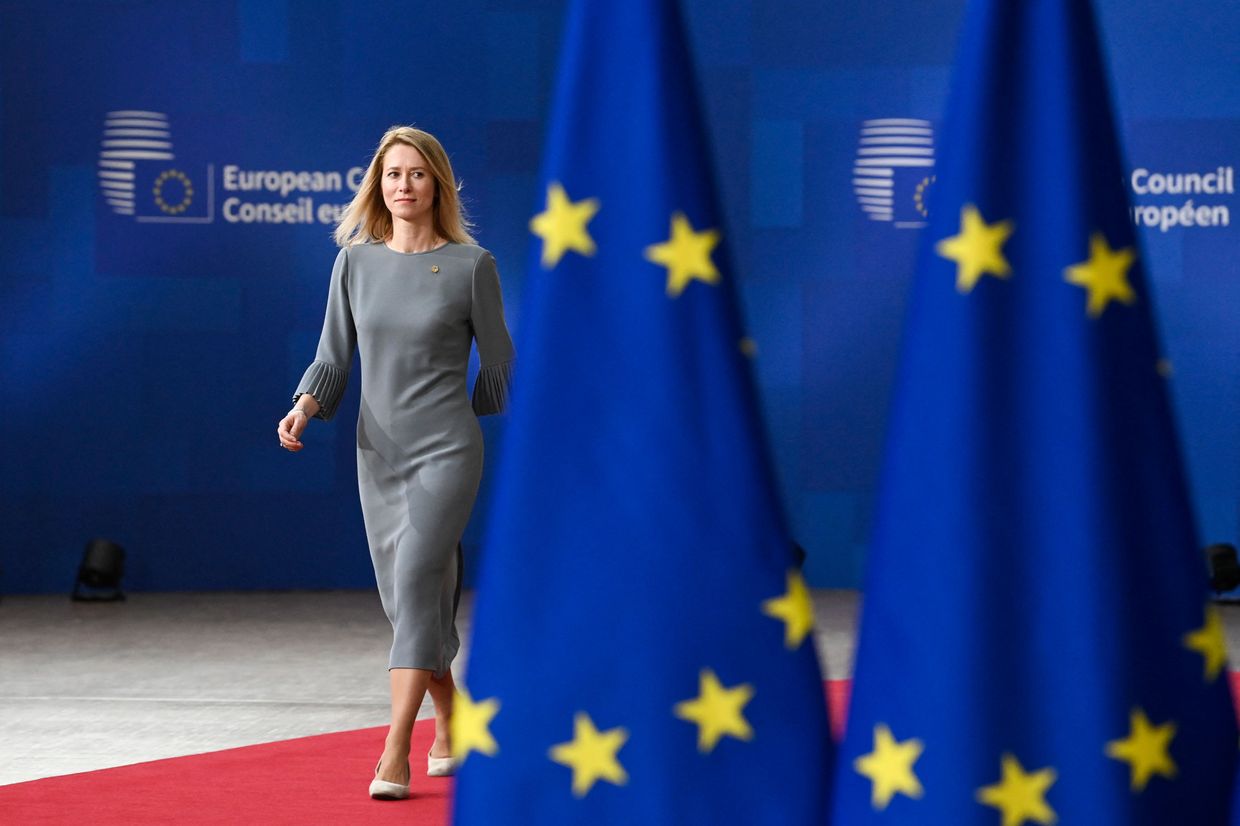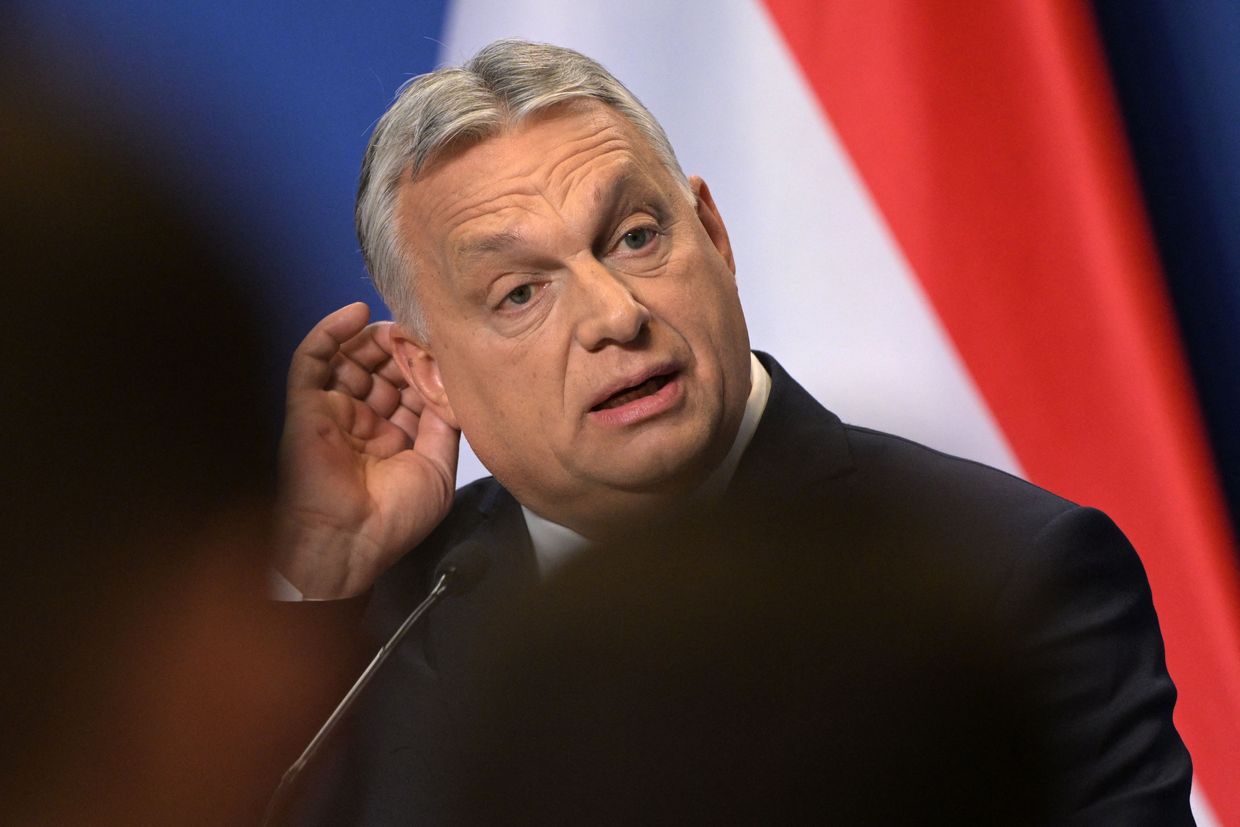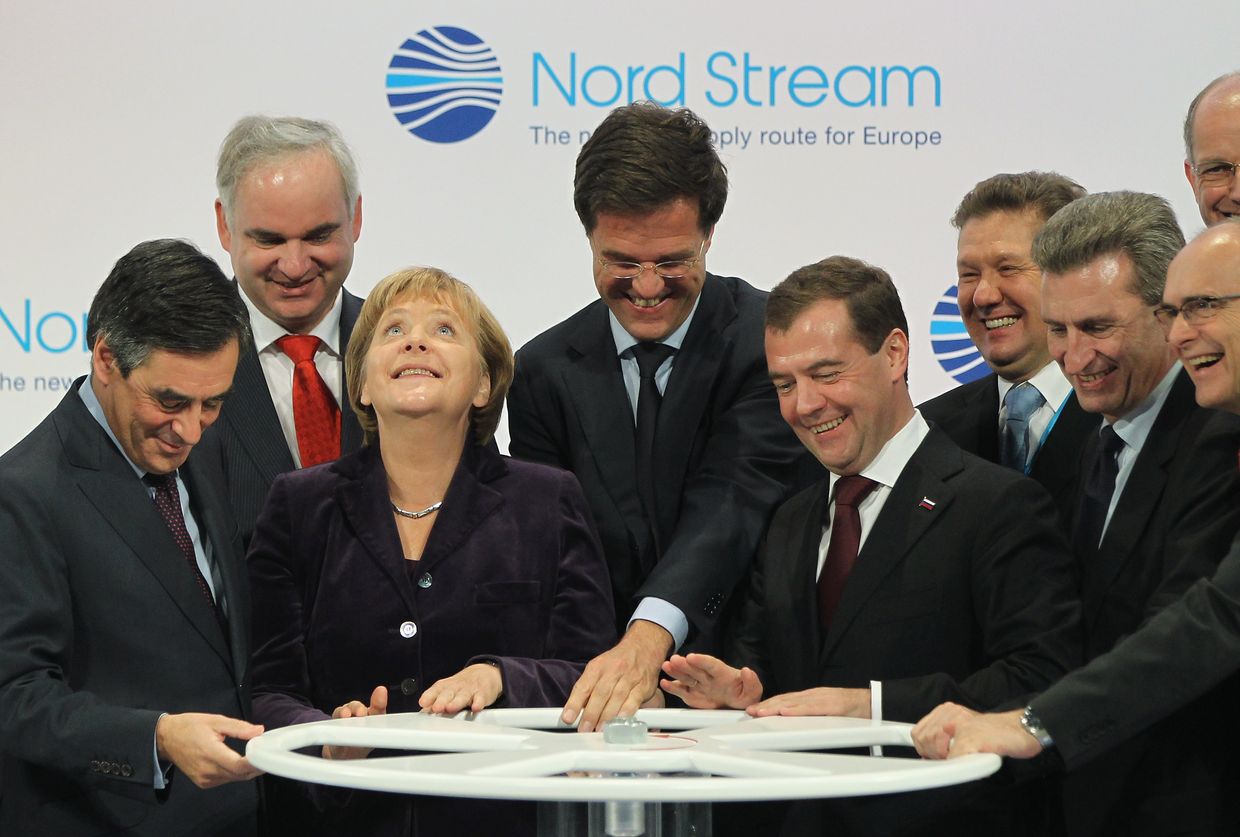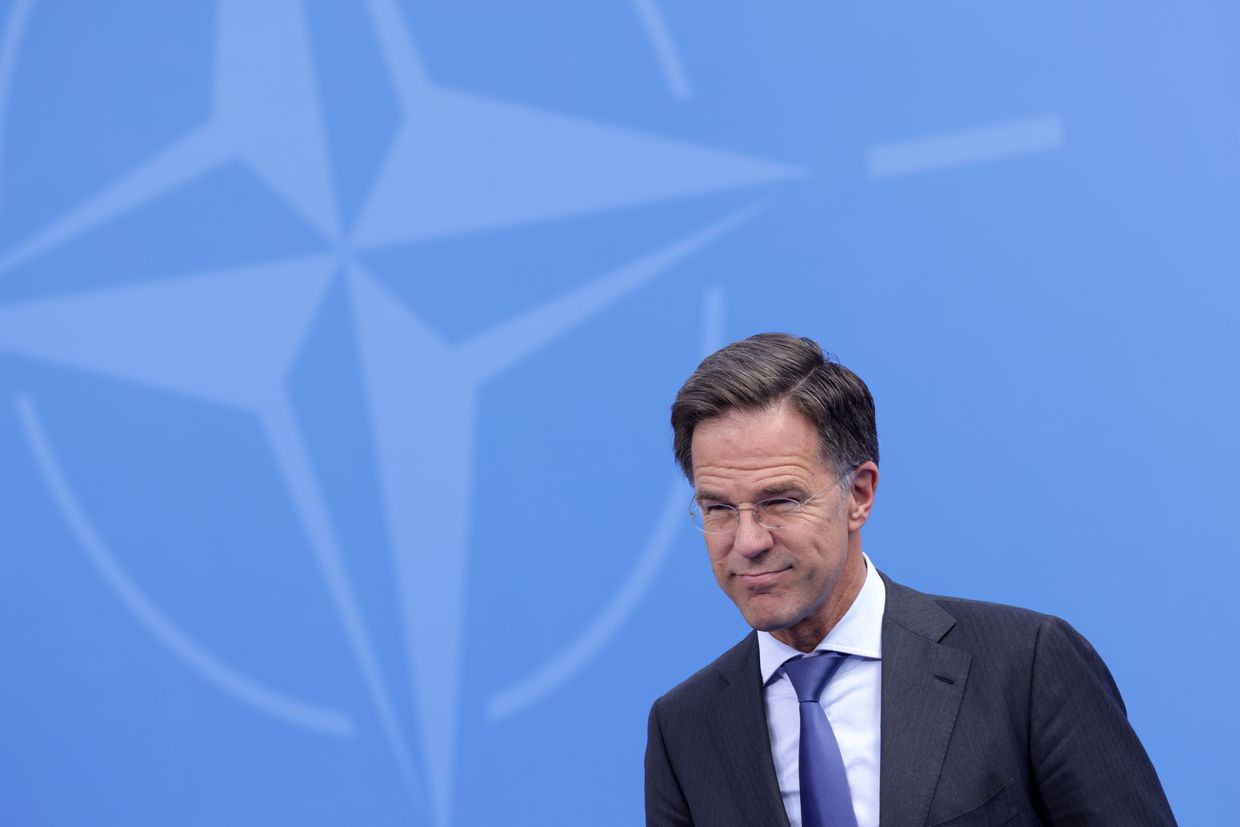How Mark Rutte became NATO Secretary General and what it means for Ukraine?.
Support independent journalism in Ukraine. Join us in this fight.
Become a member Support us just once"There was a joke I heard the other day," Estonian Prime Minister Kaja Kallas told the audience of the Politico Defense Summit in November 2023, as the mandate of NATO Secretary General Jens Stoltenburg entered its final 12 months. "The next Secretary General should be from a new member state...should definitely be from a country that has spent at least 2% of their GDP on defense, and it would be nice if it would be a woman." "So it's logical it should be Mark Rutte," she joked, hinting that she, not the Dutch prime minister, would fulfill all three criteria.
 Estonian Prime Minister Kaja Kallas arrives for a summit at EU parliament in Brussels, Belgium, on Feb.
Estonian Prime Minister Kaja Kallas arrives for a summit at EU parliament in Brussels, Belgium, on Feb.
9, 2023. (John Thys/AFP via Getty Images)
Despite Kallas' arguments, by March, Rutte had received the backing of the U.S. and U.K. and, by June, was supported by twenty-nine of NATO's thirty-two member states. Only Hungary, Slovakia, and Romania were left to convince. Rutte and Hungarian Prime Minister Viktor Orban reportedly met on the sidelines of an EU leaders' dinner in Brussels on June 17.
Rutte promised he would not interfere with Budapest's opting out of NATO initiatives to support Ukraine. "In light of his pledge, Hungary is ready to support Prime Minister Rutte's bid for NATO Secretary General," Orban announced on June 18.
 Hungarian Prime Minister Viktor Orban gives his first international press conference after his Fidesz party won the parliamentary election, in the Karmelita monastery housing the prime minister's office in Budapest, Hungary, on April 6, 2022. (Attila Kisbenedek/AFP via Getty Images)
Hungarian Prime Minister Viktor Orban gives his first international press conference after his Fidesz party won the parliamentary election, in the Karmelita monastery housing the prime minister's office in Budapest, Hungary, on April 6, 2022. (Attila Kisbenedek/AFP via Getty Images)
Slovak President Peter Pellegrini also announced he was backing Rutte on the same day, leaving Bucharest as the last holdout. Romanian President Klaus Iohnannis is the long-shot competitor left in the running.
'Work with whoever is on the dance floor'
Since becoming Dutch prime minister back in 2010, Rutte has kept a low-key persona in the Netherlands.
The 57-year-old is known for cycling to work in The Hague, continuing to teach history one day a week at a local secondary school, and can be regularly spotted at a few cafes and restaurants in the city center. Rutte, the longest-serving prime minister in Dutch history, earned the nickname "Teflon Mark" for his slick handling of political scandals. Due to the nature of the Dutch parliamentary system, Rutte is used to working in complex coalitions.
He is widely regarded as a stable, consensus-building politician, a feature that helped him secure the support of over 30 heads of state in his most recent top post bid.
 Dutch Prime Minister Mark Rutte speaks during a joint press conference with Canadian Prime Minister and British Prime Minister inside the Downing Street Briefing Room in London, U.K., on March 7, 2022. (Alberto Pezzali/POOL/AFP via Getty Images)
Dutch Prime Minister Mark Rutte speaks during a joint press conference with Canadian Prime Minister and British Prime Minister inside the Downing Street Briefing Room in London, U.K., on March 7, 2022. (Alberto Pezzali/POOL/AFP via Getty Images)
In light of the U.S. presidential elections in November, Rutte has another competency that made him a popular candidate. During Donald Trump's presidency, Rutte proved to be able to deal with the White House's whims and communicate directly. At the 2024 Munich Security Conference, Rutte appeared unencumbered by the prospect of another four years of Trump, arguing that Europe has to stop "moaning and nagging and whining about Trump."
The remark echoed a comment he made about Trump in 2019 when he said, "We have to work with whoever is on the dance floor."
Rutte, Putin, and war
Before 2014, working with Russian President Vladimir Putin was not off the table either. Rutte was present at events like the launch of the Nord Stream pipeline, though he occasionally raised concerns about issues such as LGBT+ rights in Russia. This changed on July 17, 2014, when flight MH17 was shot down by Russian-led militants over eastern Ukraine two hours after taking off from Amsterdam Schipol airport.
He told Putin directly he was furious and repeatedly demanded that all the bodies be returned, according to a Politico profile. He gained a reputation as a European leader with whom Putin could not play mind games or attempt to intimidate.
 (L-R, first row) French Prime Minister Francois Fillon, German Chancellor Angela Merkel, Dutch Prime Minister Mark Rutte, Russian President Dmitry Medvedev, and European Union Energy Commissioner Guenther Oettinger turn a wheel to symbolically start the flow of gas through the Nord Stream Baltic Sea gas pipeline at a ceremony in Lubmin, Germany on Nov.
(L-R, first row) French Prime Minister Francois Fillon, German Chancellor Angela Merkel, Dutch Prime Minister Mark Rutte, Russian President Dmitry Medvedev, and European Union Energy Commissioner Guenther Oettinger turn a wheel to symbolically start the flow of gas through the Nord Stream Baltic Sea gas pipeline at a ceremony in Lubmin, Germany on Nov.
8, 2011. (Sean Gallup/Getty Images)
In the following eight years, however, Rutte did not enact policies to get the Netherlands onto a war footing. Defense spending in the Netherlands dipped to 1.1% of GDP in 2015, a record low.
The same year, news emerged that a shortage of ammunition meant that many soldiers were training without bullets, with some resorting to making a "bang" noise to simulate their weapon being fired. Continued budget cutbacks and personnel shortages led one former general to describe the state of the Dutch military as being "sick and on an IV drip" by 2017. Following the start of Russia's full-scale invasion, defense spending rose to 1.6% in 2022 and an estimated 1.7% in 2023.
The Netherlands will finally spend 2% of the country's GDP on defense in 2024 and has emerged as a reliable partner for Kyiv, taking the lead with initiatives like providing F-16 planes to Ukraine. The Netherlands has also allocated £4.35 billion in military aid to Ukraine, fifth overall. Still, the country lags behind nations in Central and Eastern Europe in terms of defense budget spending.
Poland's spending on defense reached just over 3% of GDP in 2023 and plans to spend a colossal 4% in 2024.
Strengths and weaknesses
Over decades, the Dutch leader "became a popular figure outside the Netherlands in the European arena," Denis Cenusa, an associated expert at the Eastern European Studies Center, told the Kyiv Independent.
"Rutte has more efficiently capitalized on co-management with other EU leaders of the crisis generated by Russia's aggression against Ukraine," Cenusa said. Meanwhile, Rutte spent months focused on winning over countries like Hungary and Turkey, which initially opposed his candidacy. NATO makes decisions "not by means of voting, but by consensus-building," Anna van Zoest, the director of the Netherlands Atlantic Treaty Association and former Dutch diplomat posted to NATO headquarters, told the Kyiv Independent. "Everyone in the end needs to be able to agree, and that requires a Secretary General who can take on a role as mediator."
 Outgoing Dutch Prime Minister Mark Rutte speaks to the media on the first day of the 2023 NATO Summit in Vilnius, Lithuania, on July 11, 2023. (Sean Gallup/Getty Images)
Outgoing Dutch Prime Minister Mark Rutte speaks to the media on the first day of the 2023 NATO Summit in Vilnius, Lithuania, on July 11, 2023. (Sean Gallup/Getty Images)
Rutte would be able to find a middle ground between the cautious, large members of NATO, like Germany and the U.S., and the members that neighbor Russia, in part because the Netherlands fits into neither category.
Therein lies a key reason the Netherlands has already produced three NATO Secretary Generals, van Zoest said.
"It's a country that's big enough to make an impact but small enough not to call the shots."